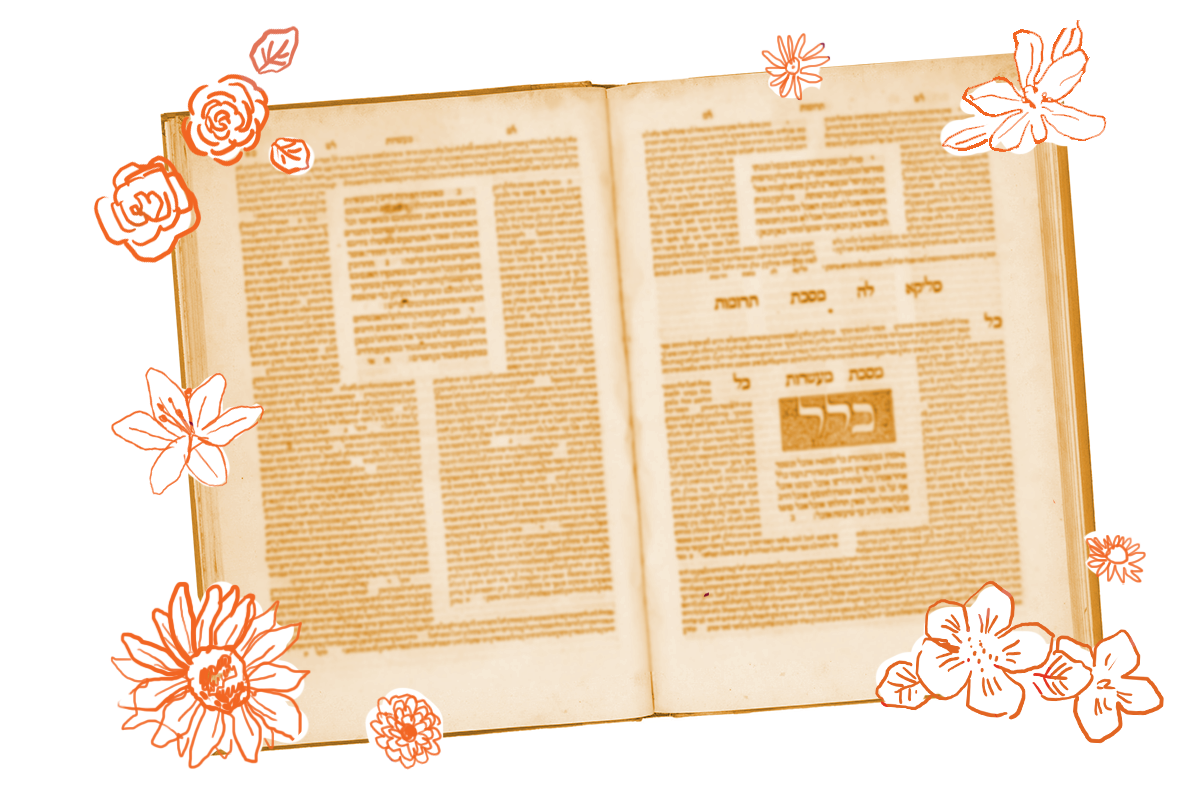As a rabbi and mother of two preschoolers, I am constantly observing and expressing gratitude for the development of my children. I praised the first time my youngest opened his eyes to look at me and the world around him. I praised the first time my eldest figured out how to control his own hand. First steps and first bike rides, first times floating in the pool, and more and more blessings never to be taken for granted. Today’s page offers a rare glimpse into the rabbinic view of child development.
Let’s start by looking backward for a moment. Back on Eruvin 82, we learned that a child who no longer needs their mother is obligated to sit in the sukkah. What are the developmental signs that the child is ready for greater independence? The child does not call out for their mother when they wake in the middle of the night, nor do they need the mother to wipe their tuches. The Gemara suggests this happens around age four or five.
Here, in Sukkah 42, the sages describe more milestones by which children are ready for other mitzvot, but without pinning them to an age — instead, the child simply takes on the obligation when they show that they are ready:
A child who knows how to wave the lulav, is obligated in the mitzvah.
A child who knows how to wrap himself in a garment is obligated in the mitzvah of tzitzit (ritual fringes).
A child who knows how to preserve the sanctity of tefillin, his father buys him tefillin.
A child who knows how to speak, his father teaches him Torah and Shema.
In case you thought teaching a tot all of Torah seemed ambitious, Rabbi Hamnuma clarifies that “Torah” refers specifically to a single verse of Deuteronomy 33:4: “Moses commanded us Torah, an inheritance of the congregation of Jacob.” This single verse from Torah teaches what Torah is and what it means — a starting point for a child just learning to speak.
A consistent theme here is that children take on obligations not at an arbitrary age or an age when other children seem ready, but when they themselves show readiness.
In addition to listing personal milestones children achieve, today’s page also includes a list of milestones that indicate a child is ready to take on various communal responsibilities as well. It is noteworthy that it is incumbent upon the community to honor that child’s competency.
If the child knows how to protect his body from ritual impurity, it is permitted to eat ritually pure food that came into contact with his body.
If the child knows to protect his hands from ritual impurity, it is permitted to eat ritually pure food that came into contact with his hands.
When children demonstrate ability, not only do we trust them to perform their own mitzvot, we can rely on them for things like purity (and trust food that has come into contact with them). In this way, coming of age is consequential not only to the child or the child’s parents, but indeed to the entire community.
That said, there are limits:
If a child knows how to slaughter an animal, one may eat from animals that he slaughtered. But, warns Rav Huna: This is provided that an adult is standing over him.
Wielding a large knife? Even for a competent child, that still requires supervision!
Read all of Sukkah 42 on Sefaria.
This piece originally appeared in a My Jewish Learning Daf Yomi email newsletter sent on August 18th, 2021. If you are interested in receiving the newsletter, sign up here.
The post Sukkah 42 appeared first on My Jewish Learning.




